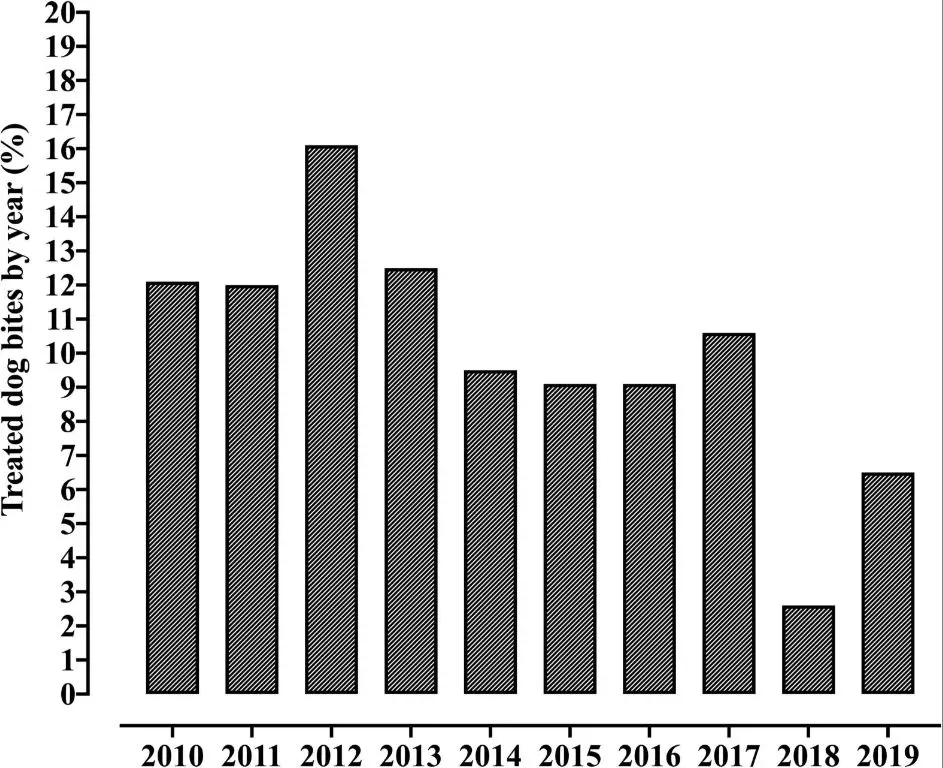Introduction
Dog and cat attacks are a serious public health issue. Each year, millions of people in the United States are bitten, scratched, or otherwise injured by dogs and cats. In rare cases, these injuries can even lead to death.
The purpose of this article is to provide a statistical comparison of dog attacks versus cat attacks. Key topics will include total numbers of attacks, severity of injuries, fatalities, breeds involved, victim demographics, triggers, prevention tips, and medical treatment. Through a data-driven analysis, this article aims to educate readers on the relative risks of dog versus cat attacks.
Total Number of Attacks
When comparing the total number of attacks by dogs versus cats, the data shows that dogs are responsible for significantly more attacks each year. According to statistics from animal control agencies, there are an estimated 4.5 million dog bites per year in the United States. In contrast, while cats may bite and scratch more often during play or as a warning, official reports of serious injuries from cat attacks are much lower, estimated to be around 400,000 per year.
Some key factors that contribute to the higher rate of dog bites and attacks compared to cats include:
- Dogs have much stronger jaws and sharper teeth, allowing them to inflict severe lacerations and puncture wounds.
- Larger dog breeds can easily overpower adults in an attack, whereas most domesticated cats pose little physical threat.
- Dogs are more likely to attack strangers or visitors to a home, whereas cats usually only attack if provoked.
- Dogs may be encouraged or trained to attack in certain situations, increasing risk of bites.

While cats do bite and scratch more frequently overall, the vast majority do not lead to hospitalization or fatality. Dog attacks cause exponentially more severe injuries requiring intensive medical treatment each year.
Severity of Injuries
When comparing the severity of injuries from dog attacks versus cat attacks, there are some notable differences. Dog attacks often cause more serious wounds due to their larger size and stronger jaws and teeth. Dogs have larger and sharper canine teeth that can cause deep puncture wounds and tears in flesh during an attack. Their powerful jaws can exert over 200 pounds of pressure per square inch. This allows them to inflict crushing injuries on bone and tissue.
In contrast, cat attacks more commonly result in superficial scratches and puncture wounds from their smaller teeth. Cats have needle-like teeth optimized for gripping prey rather than tearing flesh. While cat scratches can become infected if not properly treated, they rarely cause life-threatening injuries on their own. However, cats do sometimes bite and their jaws can produce enough force to puncture skin deeply, which can cause bacterial infections in underlying tissue and bones.
According to hospital records, dog bite injuries require medical treatment at around a 3:1 ratio compared to cat bite injuries. Dog attacks send over 330,000 people to emergency rooms yearly in the United States, with thousands requiring extended hospitalization or reconstructive surgery. Cat bites account for around 90,000 emergency room visits per year but very few life-threatening injuries.
Overall, dog attacks pose a much higher risk of severe, complex wounds requiring extensive medical treatment. Cat bites and scratches, while still prone to infection, are generally more superficial in nature.
Fatalities
When looking at fatalities from dog versus cat attacks, studies show that dogs are responsible for significantly more deaths each year. While exact numbers vary year to year, approximately 30-50 people in the United States die from dog attacks annually. Most of these are from pit bulls or rottweilers. In contrast, fatalities from domestic cat attacks are extremely rare, with only a handful of deaths reported in the last few decades.
This massive difference in fatality rate is due to the predatory nature and physical power of dogs, especially larger breeds and those bred for guarding and fighting. With their large size and strong jaws, certain dogs can easily overpower and kill a human, especially a small child. Cats very rarely exhibit the predatory aggression that leads to fatal maulings. Their small size also limits the physical damage they can inflict.
So while cat scratches and bites are common, they almost never result in death. Dog attacks, on the other hand, can quickly turn deadly due to the sheer strength and predatory instincts of certain breeds. Being aware of the risk factors and taking proper precautions around unfamiliar or aggressive dogs is crucial to preventing these needless deaths.
Breeds Involved
When looking at dog breeds most frequently involved in attacks, pit bulls, Rottweilers, German shepherds, and other large breed dogs are disproportionately represented compared to their overall population. According to various statistics, pit bull-type dogs contribute to nearly 50% of fatal attacks on humans, despite making up an estimated 6% of the total U.S. dog population. Rottweilers make up the second most reported breed involved in attacks. On the other hand, domestic cats come from the single species Felis catus and do not have distinct breeds associated with aggression in the way some dog breeds do.
That said, there are some apparent trends in cats that cause the most frequent and severe attacks. Male cats, especially unneutered tomcats, tend to be more aggressive. Larger cat breeds with strong prey drives like Bengals, Savannahs, and Chausies may also pose a higher risk for aggressive behavior. Feral cats that lack socialization and thrive outdoors are more prone to attack, as well. Ultimately for cats, the specific environment, socialization, and training of an individual cat plays a larger role in aggression than identifiable aggressive breeds.
Victim Age Groups
When looking at dog versus cat attacks, there are some key differences in the most common victim age groups. For dog attacks, children are disproportionately affected. According to research, children under the age of 5 have the highest incidence rates of dog bites and attacks. In fact, over 50% of dog attack victims are children under 12 years old. The elderly are also at higher risk, likely due to reduced mobility and ability to defend themselves.

With cats, the most frequent victim age groups differ. Adults between 18-65 are more likely to be attacked by cats than young children or seniors. This is probably because adults have more frequent and direct interactions with their pet cats. Children under 5 do still represent about 10-15% of cat attack victims. Overall though, cats do not target children or the elderly nearly as often as dogs. Their aggression and scratching/biting behavior tends to be focused more evenly across all age groups above 5 years old.
In summary, dogs disproportionately injure the very young and old, while cats are slightly less discriminating regarding victim age.
Triggers and Risk Factors
There are several common triggers and risk factors that can lead to aggressive behavior in dogs versus cats:
Dogs:
- Territorial behavior – Dogs may attack if they feel their territory is being threatened by a stranger or other animal entering their space.
- Protective behavior – Dogs, especially breeds like German Shepherds, may attack if they perceive a threat to their family or home.
- Predatory behavior – Many dog attacks stem from their prey drive kicking in when they see small animals or children running.
- Fear – Dogs will bite defensively if they are afraid of a person or situation.
- Pain or sickness – An otherwise friendly dog may snap if hurt or unwell.
- Abuse – Dogs with a history of abuse are more likely to be aggressive.
- Lack of socialization – Dogs without proper socialization as puppies are more prone to fear-based aggression.
Cats:

- Overstimulation – Petting a cat too hard or for too long can trigger an aggressive response.
- Fear – Cats may attack if frightened by a person, animal, or strange environment.
- Pain – Like dogs, cats in pain may bite or scratch.
- Predatory instinct – Cats playing or hunting may inadvertently scratch or bite their owners.
- Territory disputes – Fighting between cats in the same home is common, usually triggered by disputes over territory.
Risk factors for aggressive behavior in both species include lack of training, intact animals, and breed tendencies. Preventing attacks involves proper socialization, creating a predictable routine, reading warning signs from the animal, and safely managing interactions with children.
Prevention Tips
Here are some tips to help prevent cat and dog attacks:
-
Supervise interactions, especially between children and pets. Don’t leave babies or young children alone with any animal.
-
Socialize and train your pet from a young age. Attend obedience classes for dogs. Train cats to tolerate handling and restraint.
-
Spay/neuter your pet to reduce territorial and mating-related aggression.
-
Create a safe home environment.Provide cats with vertical space & hiding places. Dogs should have their own resting spot.
-
Keep cats indoors and supervise dogs when outdoors. This prevents exposure to disease, other animals, and dangerous situations.
-
Never approach an unfamiliar dog. Teach children to ask the owner before interacting with pets.
-
Watch for warning signs like growling, hissing, stiff tail, staring, etc. and remove yourself from the situation.
-
Muzzle aggressive dogs when in public or interacting with children or strangers.
-
See your vet if your pet exhibits sudden behavior changes or aggression.
Medical treatment or behavioral intervention may be needed.
Treatment
When it comes to treating injuries from dog and cat attacks, there are some important first aid and medical treatment steps to take.
For minor scratches and bites, clean the wound thoroughly with soap and water to lower the risk of infection. Apply antibiotic ointment and cover it with a clean bandage. Watch for signs of infection like increasing redness, swelling, drainage or fever. Seek medical treatment if these occur.
More serious dog or cat bites that break the skin will require medical attention. Dog bites especially can cause deep puncture wounds and tears. Seek emergency care for any bleeding that won’t stop, large wounds, injuries to the eyes, face, hands or genitals. These wounds are at high risk for infection.

At the ER or doctor’s office, they’ll clean the injury and may presribe a round of antibiotics to prevent infection. Larger wounds may need stitches or surgery. Tetanus shots are often given if it’s been awhile since the last one.
In rare cases, blood tests may be done to check for rabies if the animal’s vaccine status is unknown. If there is any possibility of rabies, treatment with a shot of rabies antibodies called RabIg may be given.
For bites that break or fracture bones, immediate medical care is necessary. These complex wounds require x-rays, stitches, antibiotics, pain medicine, and sometimes surgery.
While most household pet bites can be treated at home or at an urgent care, severe injuries will need emergency medical treatment and hospitalization to properly clean the wound, repair any damage, prevent infection, and manage pain.
Conclusion
Animal attack statistics paint an important picture regarding the relative risks and severity of dog versus cat aggression. While both pets cause injuries each year, data indicates dog attacks lead to substantially higher rates of hospitalizations and fatalities compared to cats. Understanding breed tendencies, victim demographics, triggers, and prevention strategies can help pet owners stay vigilant and safe.
In summary, dog attacks accounted for the vast majority of animal attack fatalities in recent years. Children under 10 face the highest risk of severe injury from dog aggression. Certain breeds like pit bulls and Rottweilers are responsible for the most bites and fatal attacks annually. Supervising children around dogs, neutering males, proper socialization and training, and being able to recognize warning signs before bites occur are all key prevention tips. Though cats can still inflict nasty scratches and infections, dog bites pose a statistically higher threat overall according to hospital records and mortality data. Staying informed and proactive is crucial for any animal owner.
